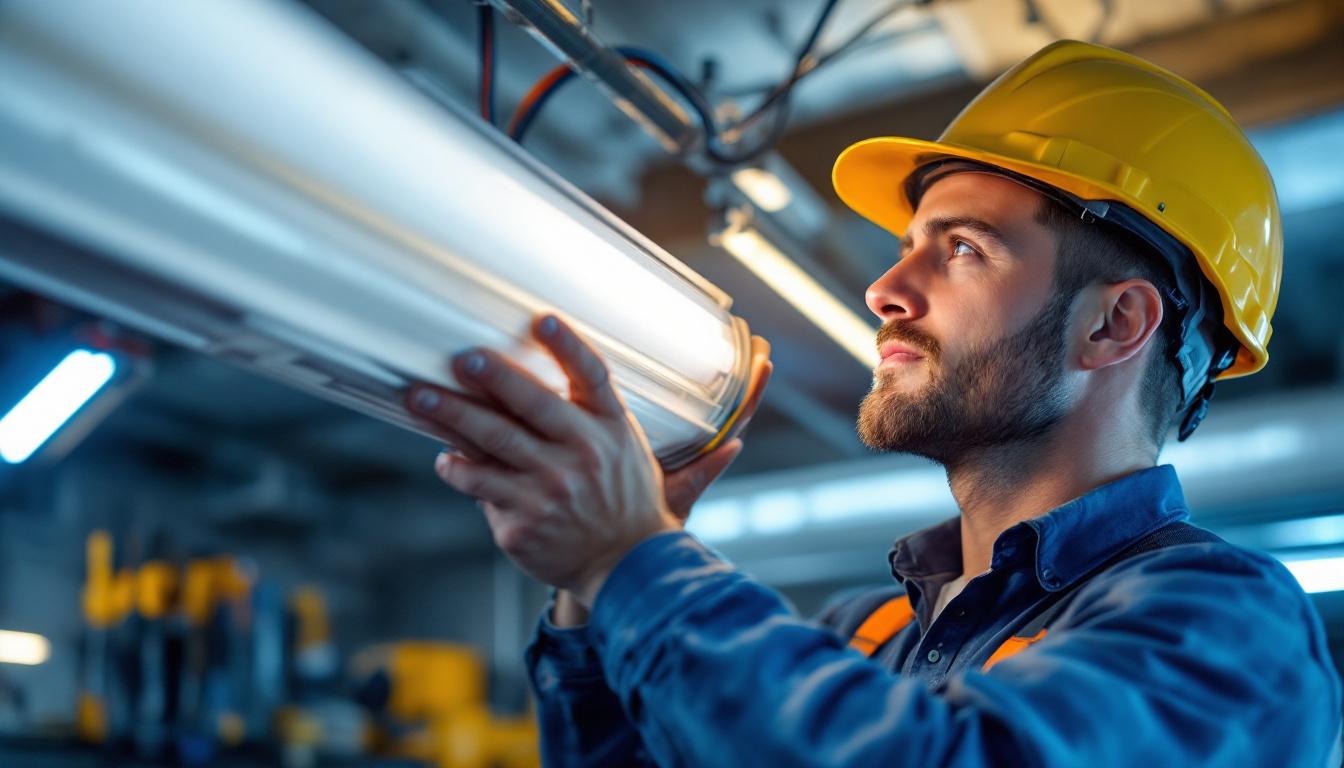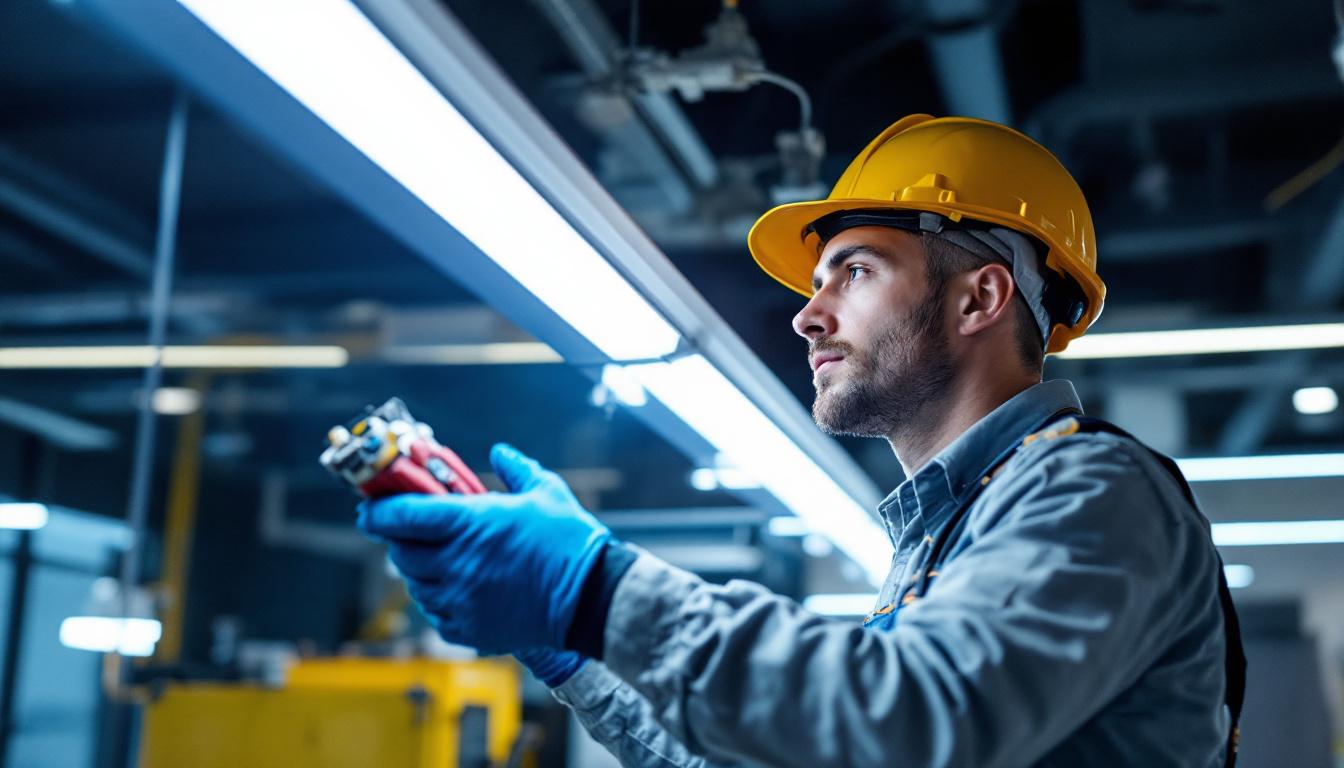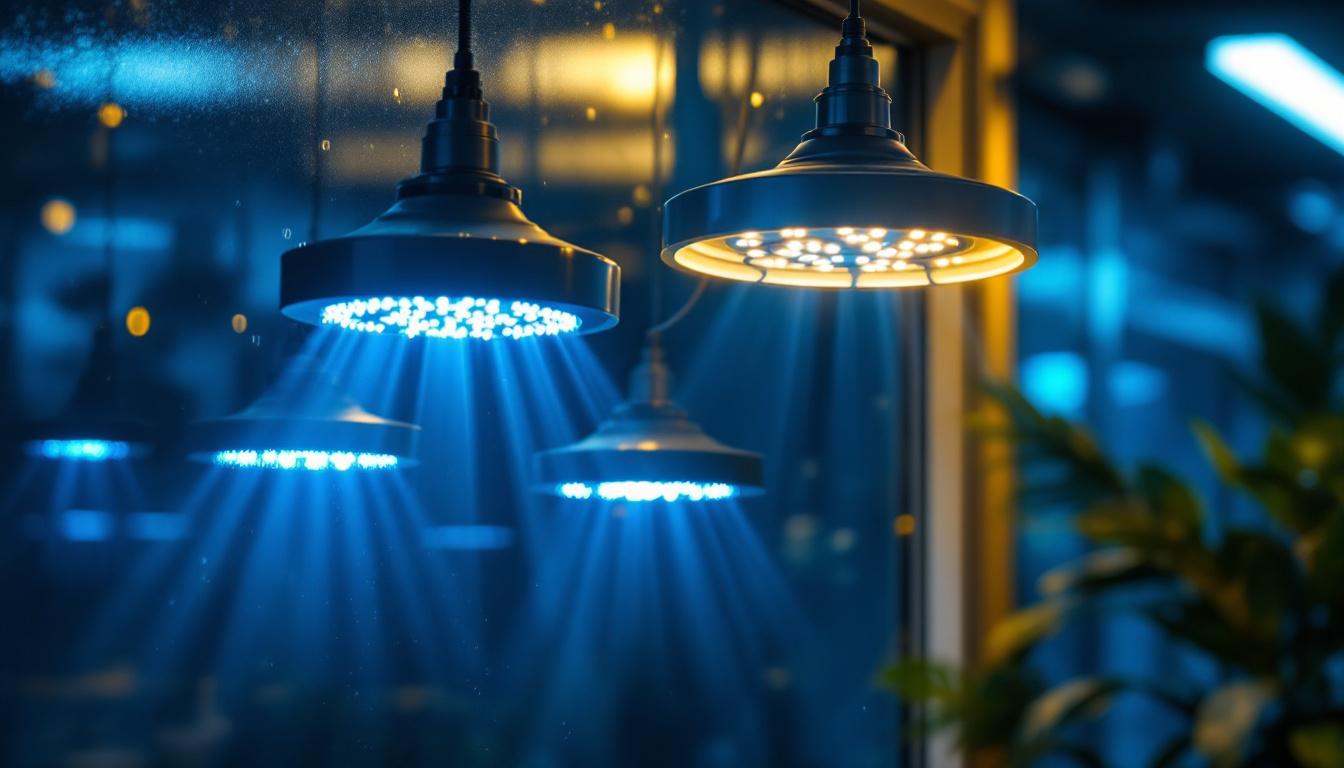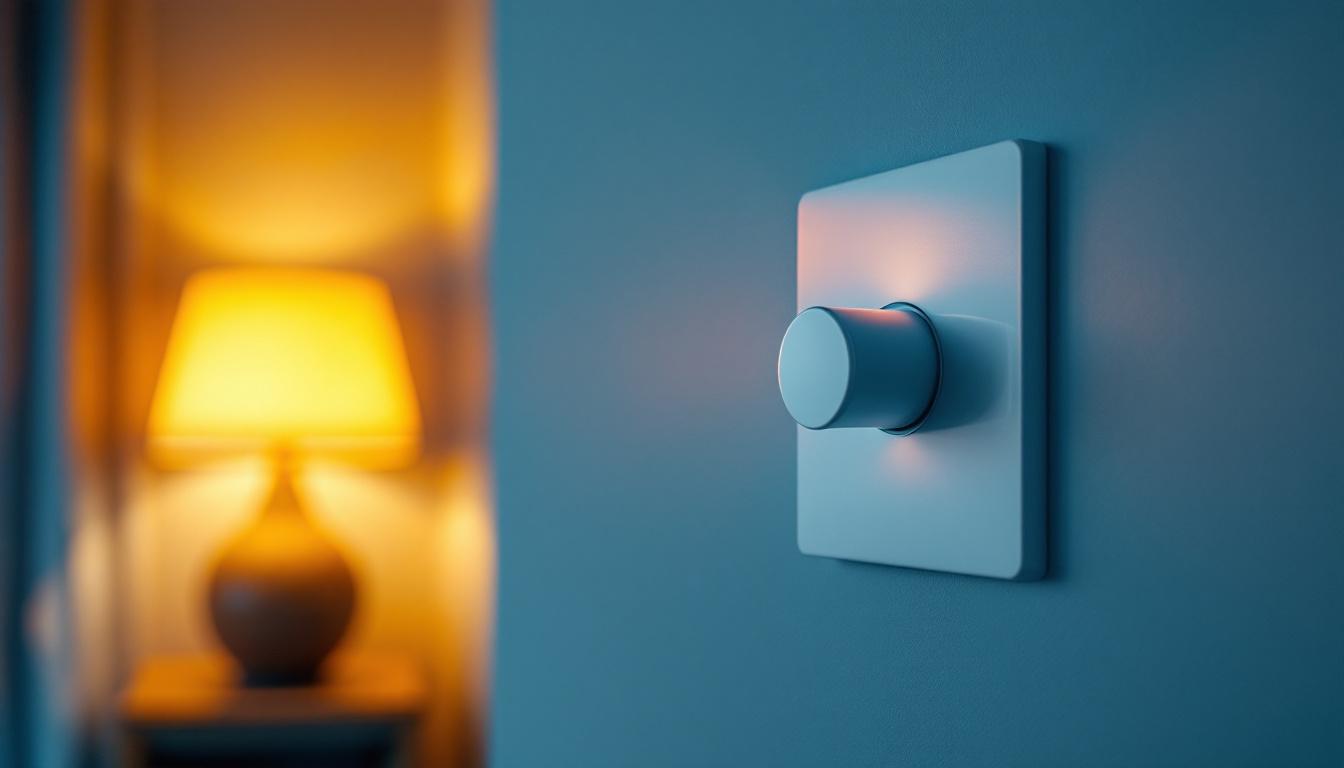
Ballasts play a crucial role in traditional fluorescent and HID lighting systems. They regulate the current to the lamps and provide the necessary voltage to start the lights. However, as the industry shifts towards more energy-efficient solutions, such as LED lighting, the necessity of ballasts has come into question.
In essence, a ballast is an electrical device that controls the flow of electricity in a lighting system. While they are essential for the operation of fluorescent and HID lamps, they can become redundant in LED installations. Understanding this transition is vital for lighting contractors aiming to optimize their projects.
Ballasts serve two primary functions: they provide the initial surge of electricity needed to ignite the lamp and they regulate the current flowing through the lamp during operation. This regulation is crucial for maintaining the lamp’s performance and longevity. In fluorescent systems, the ballast ensures that the lamp operates at the correct voltage and current, preventing flickering and premature failure.
However, with the advent of LED technology, the need for ballasts has diminished. LEDs operate on low voltage and do not require the same electrical management that traditional lamps do. This shift means that removing the ballast can lead to improved efficiency and performance in lighting installations.
Removing ballasts when converting to LED lighting is critical for several reasons. First and foremost, it eliminates unnecessary components that can complicate the installation process. By simplifying the system, contractors can save time and reduce potential points of failure.
Moreover, removing the ballast can enhance the overall efficiency of the lighting system. LEDs are designed to operate without the need for a ballast, allowing them to draw only the power they require. This can lead to significant energy savings and a reduction in operational costs over time.
In addition to cost savings, the removal of ballasts can also contribute to a more sustainable lighting solution. Traditional ballasts can contain hazardous materials, such as PCBs (polychlorinated biphenyls), which pose environmental risks if not disposed of properly. By transitioning to LED systems that do not require ballasts, businesses can reduce their environmental footprint and comply with stricter regulations regarding hazardous waste disposal.
Furthermore, the shift to LED lighting opens up opportunities for enhanced design flexibility. Without the need for bulky ballasts, lighting fixtures can be more compact and aesthetically pleasing. This allows architects and designers to explore innovative lighting solutions that can complement modern architectural styles while providing superior illumination. As a result, the transition to LED not only improves functionality but also elevates the visual appeal of spaces, making them more inviting and engaging.
Transitioning from traditional lighting to LED involves several steps, particularly when it comes to removing the ballast. Below is a comprehensive guide to ensure a smooth and efficient process.
Before beginning any electrical work, safety must be the top priority. Ensure that the power is turned off at the circuit breaker to prevent any electrical shock. Use a voltage tester to confirm that the power is off before proceeding.
Additionally, gather all necessary tools and materials. Common tools include wire strippers, screwdrivers, and electrical tape. Having everything prepared will streamline the process and minimize disruptions. It’s also wise to wear safety goggles and gloves to protect yourself from any debris or sharp edges that may be present during the removal process. If you are unfamiliar with electrical work, consider consulting with a professional or seeking guidance from someone experienced to ensure that you follow all safety protocols correctly.
Once safety precautions are in place, the next step is to access the ballast. This typically involves removing the fixture cover or lens. Most fixtures have screws or clips that hold the cover in place. Carefully remove these components to expose the internal wiring and ballast.
Once the cover is off, locate the ballast. It is usually a rectangular metal box that is connected to the fixture’s wiring. Take note of how the ballast is wired, as this will be important for the next steps. It may also be helpful to take a photo of the wiring configuration before disconnecting anything. This visual reference can be invaluable when reconnecting wires for the new LED system. Additionally, check for any signs of wear or damage to the fixture itself, as this may indicate a need for further repairs or upgrades before installing the new lighting.
With the ballast exposed, it’s time to disconnect it from the wiring. Start by carefully cutting the wires that connect the ballast to the fixture. It’s advisable to leave enough wire length to work with later. After cutting the wires, remove any screws or brackets that hold the ballast in place and take it out of the fixture.
Once the ballast is removed, inspect the wiring. Depending on the type of LED replacement being installed, some modifications may be necessary. Ensure that the remaining wires are in good condition and ready for the new LED system. If the existing wiring appears frayed or damaged, it’s crucial to replace it to avoid potential hazards. Furthermore, familiarize yourself with the specifications of your new LED lights, as some models may require a direct connection to the power source without the need for a ballast, while others may have specific wiring requirements. Understanding these details will help ensure that your new LED installation is not only functional but also maximizes energy efficiency and longevity.
After removing the ballast, the next critical step is to rewire the fixture for LED compatibility. This process can vary depending on the specific LED product being installed, but there are general guidelines to follow.
LED fixtures typically come with wiring instructions specific to the product. However, the general principle involves connecting the line voltage directly to the LED driver rather than through a ballast. This direct connection allows the LED to operate efficiently and effectively.
In many cases, the existing wires can be repurposed. The black wire usually represents the hot line, while the white wire is the neutral. Some LED fixtures may also require a ground wire, which should be connected accordingly. Always refer to the manufacturer’s instructions for specific wiring configurations.
Once the wiring is complete, it is essential to test the connection before reassembling the fixture. Turn the power back on at the circuit breaker and use a voltage tester to ensure that the connections are secure and functioning correctly.
If everything checks out, turn on the fixture to confirm that the LED lights operate as expected. If there are any issues, double-check the wiring connections and ensure that the LED fixture is compatible with the existing electrical setup.
Removing ballasts when transitioning to LED lighting offers numerous advantages that can significantly impact both the installation process and the long-term performance of the lighting system.
One of the most significant benefits of removing ballasts is the increase in energy efficiency. LEDs consume less power than traditional fluorescent or HID lamps, and eliminating the ballast further reduces energy consumption. This can lead to lower electricity bills and a reduced carbon footprint.
Moreover, LEDs have a longer lifespan, which means fewer replacements and maintenance costs. This combination of energy savings and longevity makes LEDs a cost-effective choice for both residential and commercial applications.
By removing the ballast, the installation process becomes more straightforward. Fewer components mean less complexity, allowing contractors to complete projects more quickly and efficiently. This can lead to increased productivity and the ability to take on more projects.
Additionally, maintenance becomes easier when there are fewer components to manage. In the event of a failure, troubleshooting is simplified, as there are fewer potential points of failure to investigate.
While the benefits of removing ballasts for LED installations are clear, there can be challenges that contractors may encounter during the process. Understanding these challenges and how to address them can lead to a smoother transition.
One common challenge is compatibility between existing fixtures and new LED products. Not all fixtures are designed to accommodate LED technology, and some may require additional modifications. It is essential to research and select LED products that are compatible with the existing infrastructure.
In cases where compatibility is an issue, consider using retrofit kits designed specifically for converting traditional fixtures to LED. These kits often include the necessary components and instructions to facilitate a seamless transition.
Another challenge is ensuring that the installation complies with local electrical codes. Removing ballasts and rewiring fixtures can raise concerns about safety and compliance. It is crucial to be familiar with local regulations and to follow best practices to ensure that the installation meets all necessary standards.
Consulting with a licensed electrician or referring to local code guidelines can help mitigate these concerns. Ensuring compliance not only enhances safety but also protects the integrity of the installation.
As the lighting industry continues to evolve, the transition from traditional lighting systems to LED technology is becoming increasingly prevalent. Removing ballasts is a critical step in this process, offering numerous benefits that enhance efficiency, simplify installation, and reduce long-term costs.
For lighting contractors, understanding how to effectively remove ballasts and rewire fixtures for LED compatibility is essential. By embracing this shift, contractors can position themselves as leaders in the industry, providing clients with modern, energy-efficient lighting solutions that meet their needs.
As technology advances and the demand for sustainable solutions grows, the importance of adapting to these changes cannot be overstated. The future of lighting installations lies in the hands of those who are willing to innovate and embrace new technologies, ensuring that they remain at the forefront of the industry.
Ready to take your lighting installations to the next level? At LumenWholesale, we provide lighting contractors with the highest quality, spec-grade LED products at unbeatable wholesale prices. Say goodbye to unnecessary markups and hello to a vast selection of reliable, high-performance lighting that meets the strictest industry standards. With the added benefits of free shipping and bulk buying convenience, LumenWholesale is your go-to source for premium lighting solutions that combine quality, affordability, and ease. Don’t let outdated ballasts hold you back—upgrade your projects and experience the best value in wholesale lighting today.

Discover innovative hacks and expert tips for smart lighting contractors working with T8 two lamp ballasts.

Discover how connectable LED track lighting can revolutionize cost-efficiency for lighting contractors.

Discover how UV sanitizing light technology is revolutionizing safety in lighting installations.

Discover how a dimmable light switch enhances safety in lighting installations, reduces energy costs by up to 30%, and offers customizable ambiance—upgrade today!.